Fantastic SurrealistsEva Aeppli, Walter Behrens, Arik Brauer, Ernst Fuchs, Rudolf Hausner, Wolfgang Hutter, Helmut Leherb, Anton Lehmden, Kurt Regschek, Curt Stenvert3.6.–10.9.2023
Exhibition
The exhibition Fantastic Surrealists takes a fresh look at the fantastic and its suppressed worlds. Along with Viennese Actionism, Fantastic Realism was probably the best-known genuinely Austrian contribution to the international art scene in recent decades, both of which developed in contrast to and for very different reasons from the most influential development at the time, Abstract Expressionism. It has been comparatively quiet around Fantastic Realism, although Surrealism and its various after-effects are in demand again, especially after the last Venice Biennale. But where does the surreal lie in the real? But isn’t Fantastic Realism and much of its work also about an ambiguous language game, that the fantastic is not in realism, but actually in surrealism? And finally, couldn’t this be the missing link for a currently productive consideration?
Views

Fantastic Surrealists, 2023
Exhibition view, HALLE FÜR KUNST Steiermark, Graz
Photo: kunst-dokumentation.com

Fantastic Surrealists, 2023
Exhibition view, HALLE FÜR KUNST Steiermark, Graz
Photo: kunst-dokumentation.com
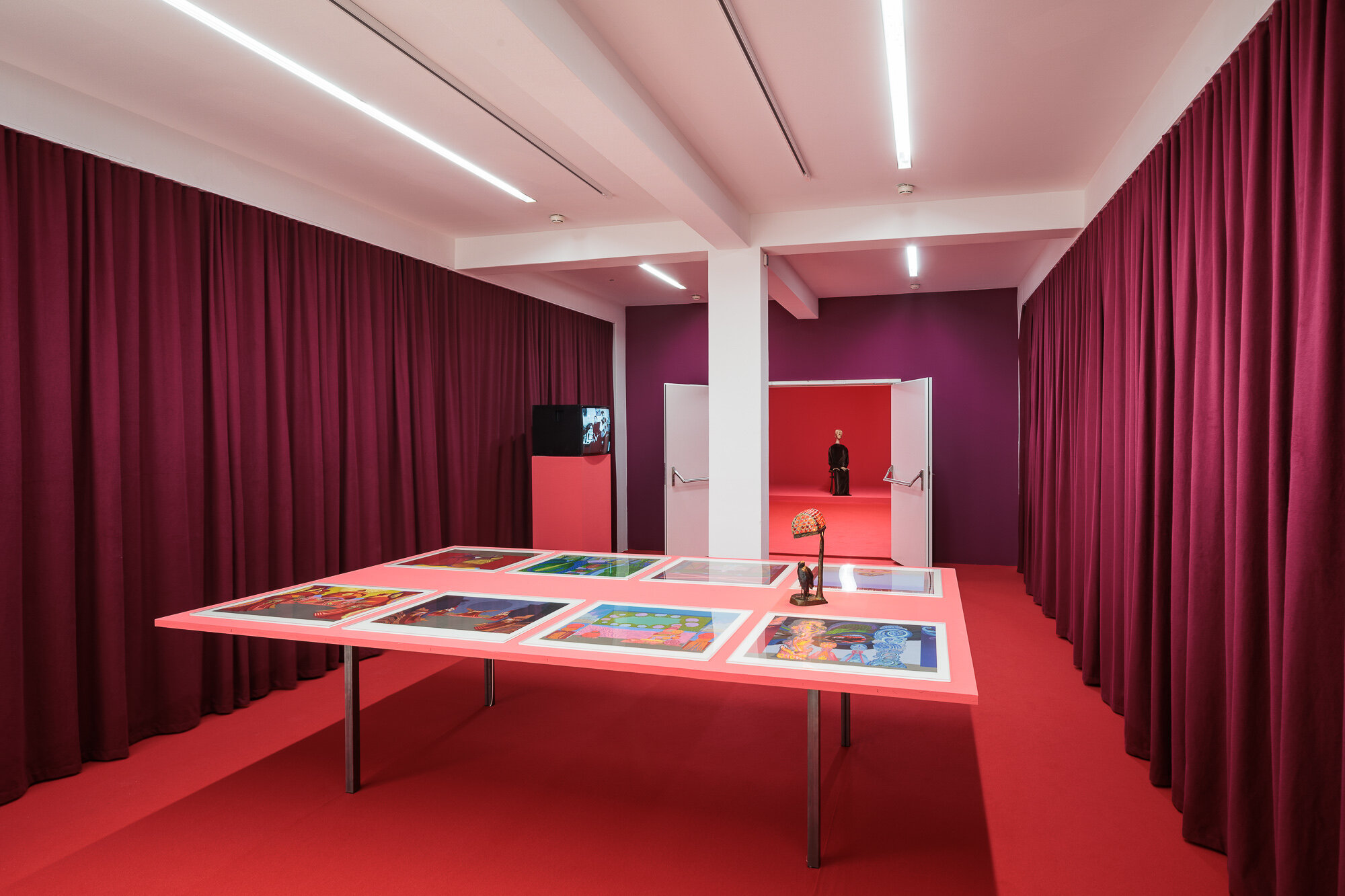
Fantastic Surrealists, 2023
Exhibition view, HALLE FÜR KUNST Steiermark, Graz
Photo: kunst-dokumentation.com

Fantastic Surrealists, 2023
Exhibition view, HALLE FÜR KUNST Steiermark, Graz
Photo: kunst-dokumentation.com
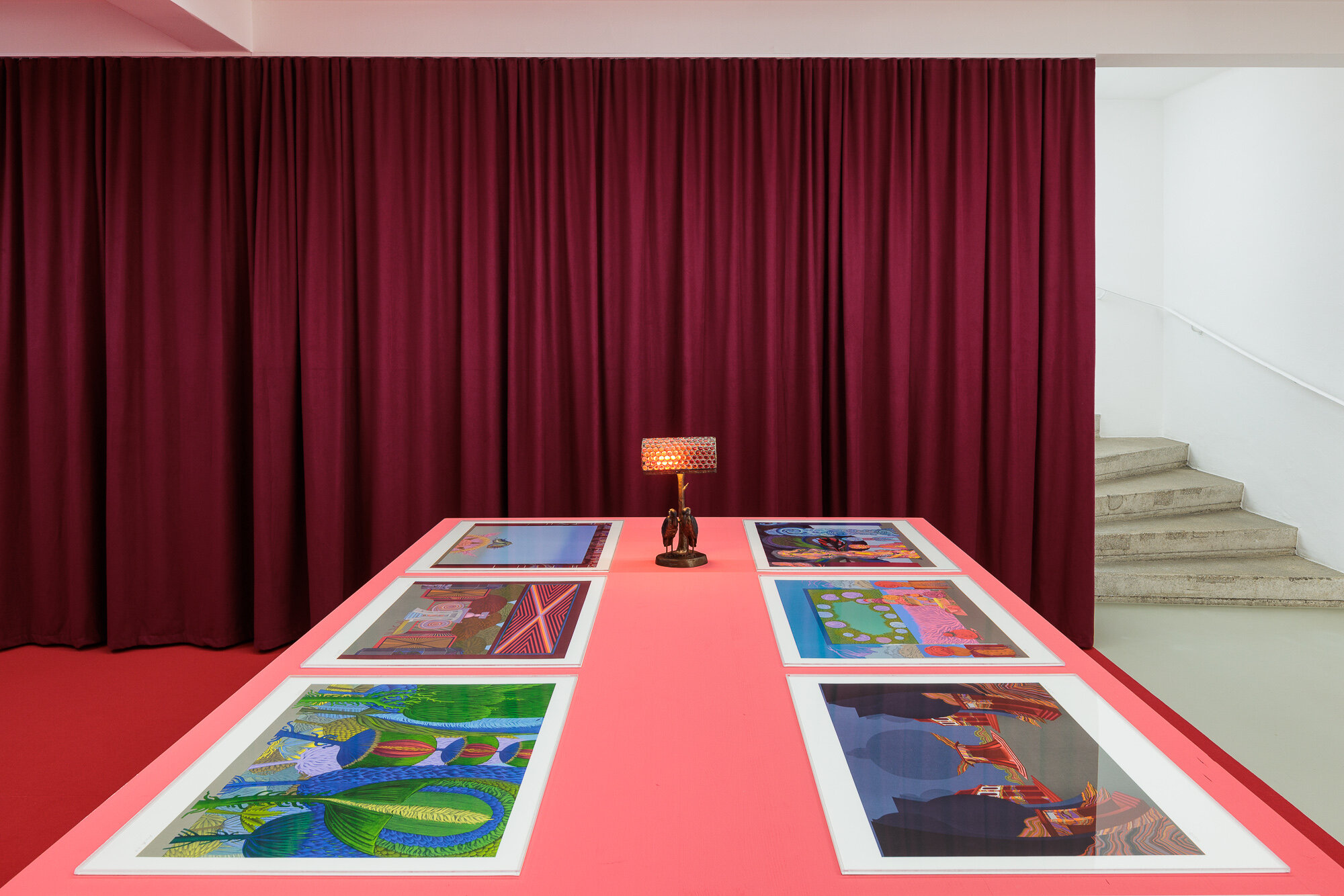
Fantastic Surrealists, 2023
Exhibition view, HALLE FÜR KUNST Steiermark, Graz
Photo: kunst-dokumentation.com
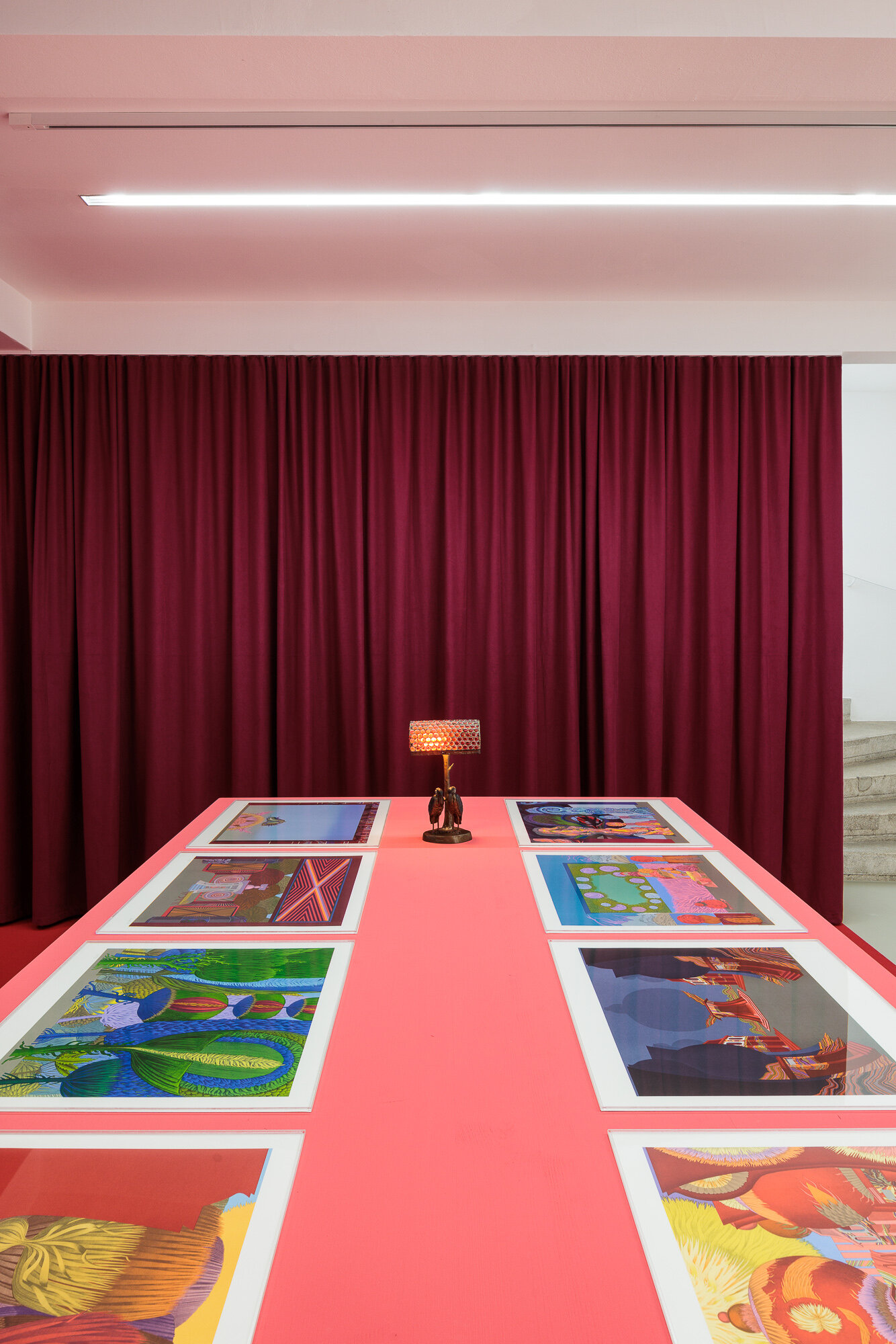
Fantastic Surrealists, 2023
Exhibition view, HALLE FÜR KUNST Steiermark, Graz
Photo: kunst-dokumentation.com

Fantastic Surrealists, 2023
Exhibition view, HALLE FÜR KUNST Steiermark, Graz
Photo: kunst-dokumentation.com

Fantastic Surrealists, 2023
Ausstellungsansicht, HALLE FÜR KUNST Steiermark, Graz
Photo: kunst-dokumentation.com

Fantastic Surrealists, 2023
Exhibition view, HALLE FÜR KUNST Steiermark, Graz
Photo: kunst-dokumentation.com

Fantastic Surrealists, 2023
Exhibition view, HALLE FÜR KUNST Steiermark, Graz
Photo: kunst-dokumentation.com

Fantastic Surrealists, 2023
Exhibition view, HALLE FÜR KUNST Steiermark, Graz
Photo: kunst-dokumentation.com

Fantastic Surrealists, 2023
Exhibition view, HALLE FÜR KUNST Steiermark, Graz
Photo: kunst-dokumentation.com

Eva Aeppli, Bella, 1970
Figure in a velvet dress with a wooden chair
126 × 52 × 136 cm
Figure: 210 x 47 x 28 cm
Chair: 93 x 44 x 50 cm
Courtesy / Photo © mumok – Museum Moderner Kunst Stiftung Ludwig Wien, formerly Sammlung Hahn, Cologne, acquired 1978
Photo: kunst-dokumentation.com
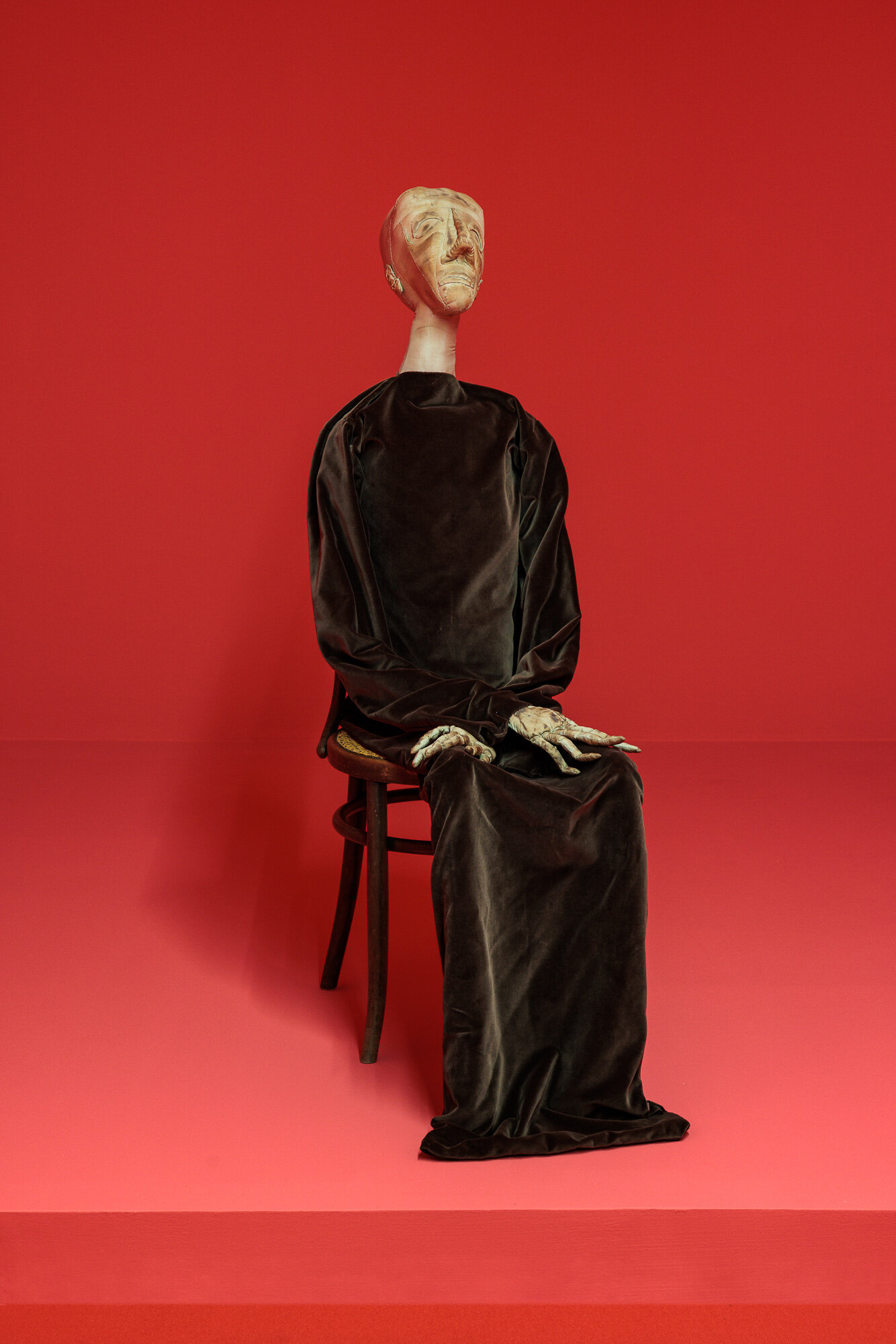
Eva Aeppli, Bella, 1970
Figure in a velvet dress with a wooden chair
126 × 52 × 136 cm
Figure: 210 x 47 x 28 cm
Chair: 93 x 44 x 50 cm
Courtesy / Photo © mumok – Museum Moderner Kunst Stiftung Ludwig Wien, formerly Sammlung Hahn, Cologne, acquired 1978
Photo: kunst-dokumentation.com

Eva Aeppli, Bella, 1970
Figure in a velvet dress with a wooden chair
126 × 52 × 136 cm
Figure: 210 x 47 x 28 cm
Chair: 93 x 44 x 50 cm
Courtesy / Photo © mumok – Museum Moderner Kunst Stiftung Ludwig Wien, formerly Sammlung Hahn, Cologne, acquired 1978
Photo: kunst-dokumentation.com

Eva Aeppli, Bella, 1970 (Detail)
Figure in a velvet dress with a wooden chair
126 × 52 × 136 cm
Figure: 210 x 47 x 28 cm
Chair: 93 x 44 x 50 cm
Courtesy / Photo © mumok – Museum Moderner Kunst Stiftung Ludwig Wien, formerly Sammlung Hahn, Cologne, acquired 1978
Photo: kunst-dokumentation.com
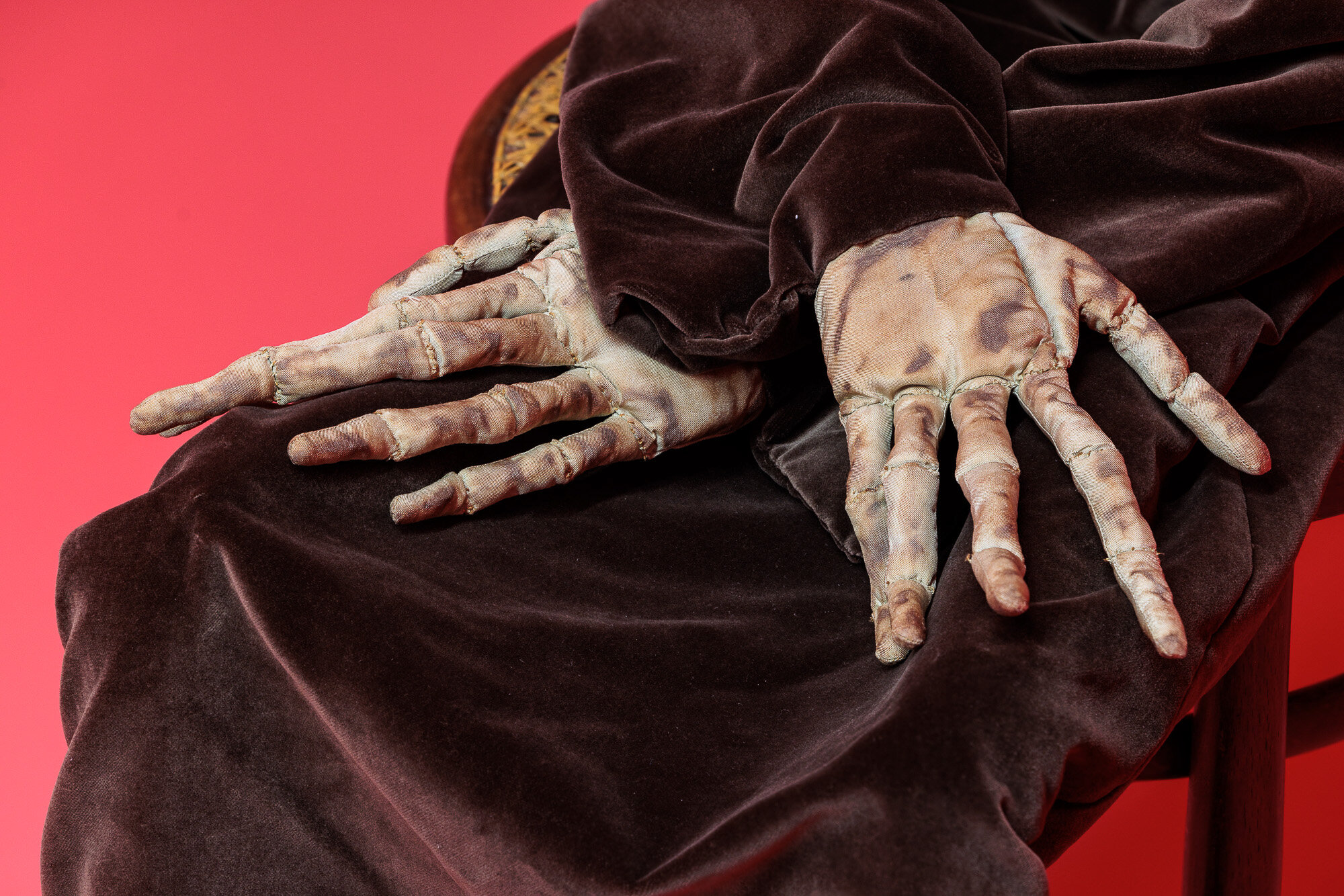
Eva Aeppli, Bella, 1970 (Detail)
Figure in a velvet dress with a wooden chair
126 × 52 × 136 cm
Figure: 210 x 47 x 28 cm
Chair: 93 x 44 x 50 cm
Courtesy / Photo © mumok – Museum Moderner Kunst Stiftung Ludwig Wien, formerly Sammlung Hahn, Cologne, acquired 1978
Photo: kunst-dokumentation.com

Fantastic Surrealists, 2023
Exhibition view, HALLE FÜR KUNST Steiermark, Graz
Photo: kunst-dokumentation.com

Walter Behrens, Verstand und Gefühl (Ewigkeit und Zeit), 1947 – 48
Oil on fiberboard
39.4 x 67 cm, frame: 50.5 x 78.5 x 5 cm
Courtesy Österreichische Galerie Belvedere, Vienna, Photo: Belvedere, Vienna
Photo: kunst-dokumentation.com

Rudolf Hausner, Der Abend, 1960
Tempera, resin paint on paper on wood
52 x 92 cm, frame: 57.3 x 97.3 x 4.5 cm (acrylic glass)
Courtesy / photo © mumok – Museum moderner Kunst Stiftung Ludwig Wien, on loan from the Artothek des Bundes since 1962
Photo: kunst-dokumentation.com

Wolfgang Hutter, Fliegende Köpfe, 1960
Oil on canvas
37 x 47 cm, frame: 50 x 60.5 cm
Courtesy Peter Infeld Private Foundation, Vienna
Photo: kunst-dokumentation.com

Kurt Regschek, Basilisk, 1966
Mixed technique on wood
64 x 49 cm, frame: 76 x 60 x 7.5 cm
Courtesy / Photo © Johannes Stoll / Belvedere, Vienna, © Bildrecht, Vienna 2023, Gift from private collection
Photo: kunst-dokumentation.com

Fantastic Surrealists, 2023
Exhibition view, HALLE FÜR KUNST Steiermark, Graz
Photo: kunst-dokumentation.com

Fantastic Surrealists, 2023
Exhibition view, HALLE FÜR KUNST Steiermark, Graz
Photo: kunst-dokumentation.com

Curt Stenvert, Violinspieler in vier Bewegungsphasen, 1947
Oil on wood
119 x 117 cm, frame: 121 x 123.5 x 4 cm
Courtesy Artothek des Bundes, permanent loan at the Belvedere, Vienna © Bildrecht, Vienna 2023
Photo: kunst-dokumentation.com
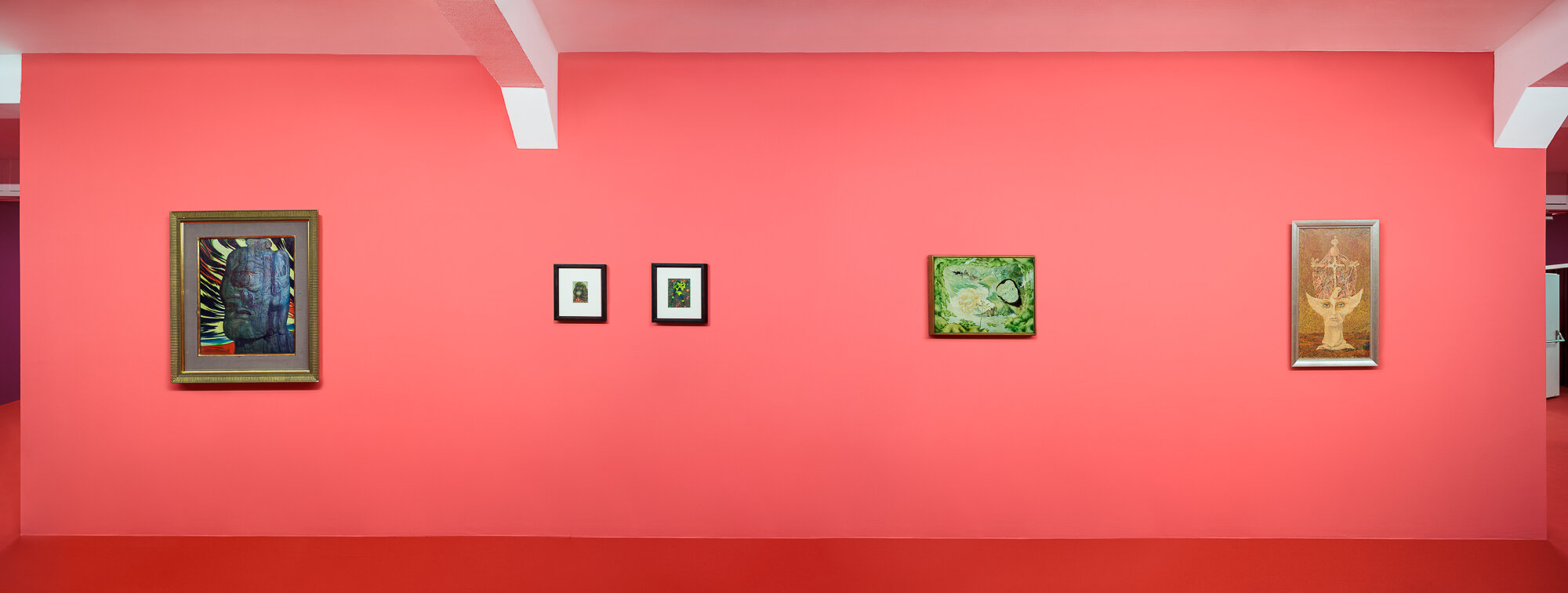
Fantastic Surrealists, 2023
Exhibition view, HALLE FÜR KUNST Steiermark, Graz
Photo: kunst-dokumentation.com

Ernst Fuchs, Cherub wie Tag und Nacht, 1974
Oil and egg tempera mixed technique
71 x 58 cm, frame: 105 x 90 cm
Courtesy Ernst Fuchs Private Foundation, Vienna, © Ernst Fuchs Werkvermittlung
Photo: kunst-dokumentation.com

Arik Brauer, Die Frau als Turm, 1967
Watercolor on vellum
14.7 x 10.5 cm, frame: 37 x 33 cm
Courtesy Sylvia Kovacek GmbH, Vienna
Photo: kunst-dokumentation.com

Arik Brauer, Equilibrist, 1973
Gouache on paper
18.7 x 14.8 cm, frame: 31 x 35 cm
Courtesy Sylvia Kovacek GmbH, Vienna
Photo: kunst-dokumentation.com

Anton Lehmden, Zwei Köpfe in einer Landschaft, 1949 – 50
Oil on fiberboard
43 x 57 cm, frame: 46 x 60 x 5 cm
Courtesy Artothek des Bundes, permanent loan at the Belvedere, Vienna
Photo: kunst-dokumentation.com

Helmut Leherb, Taubenpapst, 1970
Oil on canvas
76 x 42 cm, frame: 83.5 x 49.5 cm
Leherb estate, Vienna
Photo: kunst-dokumentation.com

Fantastic Surrealists, 2023
Exhibition view, HALLE FÜR KUNST Steiermark, Graz
Photo: kunst-dokumentation.com
Text
For large periods in the twentieth century, Austrian art was interested in the unfathomable, the other-worldly, psychological depths, and often also in violence. This can perhaps be most clearly seen in the loose group of fantastic realists, which can be roughly dated from the 1950s to the 1980s, when they were not only highly influential within contemporary discourse but also held a large number of key positions within the country’s cultural institutions, while their works entered all of Austria’s important collections. Given their dominance at the time, it is surprising that from today’s perspective they do not play a more central role in our cultural memory. Many of their works are left to themselves in museum depots and are hardly seen in most presentations of permanent collections. On the other hand, today they are now seeing something of a renaissance, which can also be explained within the context of a new interest in different forms of surrealist movements.
The attribution of the term Fantastic Realism came from the art critic Johann Muschik, who introduced this as a distinction and emphasis of a peculiarity of the Viennese art movement in contrast to the international French Surrealism. According to him, the Viennese artists were characterized by the perfection of craftsmanship and the consciousness of understanding in painting without turning away from rationality, who “use the fantastic element to heighten an element of reality.” In contrast, the interest in the subconscious, psychic automatisms and the executive variance is much stronger among the international actors, whereby the fantastic-erotic was seen as a connection in terms of content.
The term realism seems somewhat misleadingly, since it is usually associated with a socially critical political interest that depicts concrete conditions, and thus runs counter to a phantasmagorical reading. In view of many and especially early works of the group and its extended environment, a stronger view of the surrealist influences that are increasingly recognizable today is currently offered. The art movement of Surrealism, which can still be felt in its aftermath today, has developed in much more pronounced traits internationally, but comparatively not in Austria – rather restrained and shifted in parts, possibly contrary to its central power and expression. This seems all the more paradoxical, although central questions about the psyche, the body, subjectivity and history(s) have been investigated and worked through theoretically and artistically in this country as hardly anywhere else.
In addition to the founders of the Fantastic Realists, Arik Brauer, Ernst Fuchs, Rudolf Hausner, Wolfgang Hutter, Anton Lehmden, and originally also Helmut Leherb, artists who have not yet been seen in this context, or only in part, are considered. Although these artists are mostly characterized by very different approaches that distinguish them from the fantastic realists, from today’s perspective of distance it is possible to recognize important commonalities that are based on the newly emerging interest in surreal, phantasmagorical movements for which particularly the Austrian context and its diverse history offers a rich body of material.
This Fantastic Surrealists project is intended to counter habitual art history and to update our view of a well-known artistic genre with new and expanded perspectives, in both the exhibition and also a correspondingly critical program of events as a discursive expansion. The fascination for positions that are not yet or no longer part of contemporary canons is a key element in the programming at HALLE FÜR KUNST. Discovery and rediscovery are central to this exhibition experiment about specifically regional trends in surrealism and its potential significance today. Possibly, the presentation will provide a fresh look at a hitherto somewhat fixed and therein transfigured image of a specifically Austrian history, whose diverse after-effects are not to be underestimated and in which its dialogic interactions between the fantastic, the real and the surreal can also be experienced.
Correspondingly and at the same time, the Croatian artist group TARWUK (founded in New York in 2014) is presented, to whom one can ascribe a similar interest in content. In juxtaposition with this contemporary setting, the HALLE FÜR KUNST Steiermark undertakes the attempt to examine works from this “fantastic” period in terms of their presentness.
Curated by Sandro Droschl
Artists
Participating artists
Eva Aeppli
Solo (et al.): Centre Pompidou, Metz (2022), Kunstmuseum Solothurn (2016−2015, 1994), Museum Tinguely, Basel (2015, 2009 – 2008), Espace Jean Tinguely, Freiburg (FR) (2017), Ausstellungshaus Spoerri, Hadersdorf am Kamp (2010), Städtische Galerie Ravensburg (2006), Freitagsgalerie Imhof, Solothurn (2004, 1994, 1979), Garden of the Zodiac Old Market, Omaha (2003), Fondazione Il Giardino di Daniel Spoerri, Seggiano (2001), Galerie Samy Kinge, Paris (1998), Kunsthalle Burgdorf (1996), Bundeskunsthalle, Bonn (1994), Moderna Museet, Stockholm (1993, 1968), Galerie Beaubourg, Paris (1991), Galerie Littmann, Basel (1990, 1986, 1985), Galerie des Bastions, Geneva (1986), Musée d’Art Moderne de Paris (1976), Galerie Alexander Iolas, Paris (1975), Helmhaus Zurich (1974), Gimpel & Weitzenhoffer Gallery, New York (1973), Hanover Gallery, London (1972), Galerie Renée Ziegler, Zurich (1971), Kammerkunsthalle Bern (1971), Karl Ernst Osthaus Museum, Hagen (1971), Kunsthalle Nuremberg (1970), Galerie Schmela, Düsseldorf (1969), Galerie J, Paris (1965), Galerie Iris Clert, Paris (1959); Shows (et al.): Aargauer Kunsthaus, Aarau (2021), Museum Tinguely, Basel (2021−2020), Galerie Michael Haas, Berlin (2019), Bundeskunsthalle, Bonn (2014), Kunstmuseum Luzern (2013), Grimaldi Forum, Monaco (2012),Museum Tanguely, Basel (2012, 2011, 2009), Kunstmuseum Bern (2010), Centre Pompidou, Paris (2009, 1990), Kunstmuseum Solothurn (2006, 2002, 1998, 1991, 1985), Tate Liverpool (2004), Moderna Museet, Stockholm (2004), Helmhaus Zurich (1996), Museum Ludwig, Cologne (1995), Galerie Martin Krebs, Bern (1991), Städtische Galerie im Lenbachhaus, Munich (1991), Museum moderner Kunst, Vienna (1990), Museé cantonal des Beaux-Arts, Lausanne (1989), Galerie Littman, Basel (1984), Kunsthaus Zurich (1980), Künstlerhaus, Vienna (1977), Tel Aviv Museum of Art (1973), George Staempfli Gallery, New York (1960)
Walter Behrens
Solo (et al.): Galerie Basilisk, Vienna (1970)
Arik Brauer
Solo (et al.): Kunsthalle Erfurt (2019), Jewish Museum, Vienna (2014), Leopold Museum, Vienna (2014−2015), Galerie Linzergasse-Weihergut, Salzburg (2014, 1991), Dom Museum, Vienna (2009), Kunsthaus, Vienna (2004), Schloss Burgau, Styria (1997), Galerie Georges & Lesaar, Dusseldorf (1991), Jack Rutberg Fine Arts, Los Angeles (1989), Galerie Rolandseck, Bonn (1986), Goldman’s Art Gallery, Haifa (1980), Jewish Museum, New York (1979−1978), Aberbach Fine Art, London (1977), Galerie Octave Negru, Paris (1977), Aoki Gallery, Tokyo (1976), Belvedere, Vienna (1976), Albertina, Vienna (1974), Marlborough Galerie, Zurich (1973), Galerie Ketterer, Munich (1966), Galerie Flinker, Paris (1964), Galerie Raymond Cordier, Paris (1961); Shows (et al.): Belvedere, Vienna (2008), Jewish Museum, Vienna (2006), Galerie BKC, Brno (2003), Künstlerhaus, Vienna (1990), Albertina, Vienna (1989), Mauthausen Memorial (1985), exhibition “Viennese School of Phantastic Realism“, Tokyo, Kobe, Nagoya (1972), Kestner Gesellschaft, Hannover (1965), exhibition “Viennese School of Phantastic Realism“, Leverkusen, Frankfurt, Kassel, Pforzheim (1965), Biennale São Paulo (1963), Trigon, Graz (1963)
Ernst Fuchs
Solo (et al.): Schloss Straßburg, Gurk (2011), Fabrik der Künste, Hamburg (2011), Domgalerie, Vienna (2010), Sammlung Infeld, Vienna (2009), Kunsthaus Köflach (2009), Galerie Anzbach, Vienna (2007), Galerie 10, Vienna (2007), Jewish Museum, Vienna (2006), Kunsthalle, Vienna (2006), Tretyakov Gallery, Moskow (2001), St. Jakobus Kirche, Thal (1994), Russian Museum, St. Petersburg (1993), Ernst Fuchs Museum, Vienna (1988), Museum of Cultural History, Osnabrück (1981), Künstlerhaus, Vienna (1969), Albertina, Vienna (1968), Kestner Gesellschaft, Hannover (1964); Shows (et al.): Albertina modern , Vienna (2020), Stadtgalerie Klagenfurt (2011), Belvedere, Vienna (2008), Jewish Museum, Vienna (2006−2007), Sammlung Essl, Klosterneuburg (2005), Kunsthalle Wien, Vienna (2004), Galerie BKC, Brno (2003), Künstlerhaus, Vienna (1990), Albertina, Vienna (1989), exhibition “Viennese School of Phantastic Realism“, Tokyo, Kobe, Nagoya (1972), Biennale São Paulo (1969), Kestner Gesellschaft, Hannover (1965), exhibition “Viennese School of Phantastic Realism, Leverkusen, Frankfurt, Kassel, Pforzheim (1965), Biennale São Paulo (1963), Trigon, Graz (1963), Künstlerhaus, Vienna (1962), Salon Comparaisons, Paris (1962), Artists House, Jerusalem (1957), Art Club, Turin (1949)
Rudolf Hausner
Solo (et al.): Museum Würth, Künzelsau (2015), Galerie Huber, Offenbach am Main (1994), Historical Museum, Vienna (1994), Upper Belvedere, Vienna (1989−1990), Künstlerhaus, Vienna (1980), Galerie Brusberg, Hannover (1975), Galerie Welz, Salzburg (1970), Künstlerhaus, Vienna (1952), Art Club, Vienna (1947); Shows (et al.): Belvedere, Vienna (2022, 2008), Galerie BKC, Brno (2003), Künstlerhaus, Vienna (1990), Albertina, Vienna (1989), Stedelijk Museum, Mechelen (1987), Europalia, Brussels (1987), Künstlerhaus, Vienna (1984), Neue Galerie, Linz (1984), Museum am Ostwall, Dortmund (1979), Residenzgalerie, Salzburg (1972), exhibition “Viennese School of Phantastic Realism“, Tokyo, Kobe, Nagoya (1972), Tel Aviv Museum (1969), Haus der Kunst, Munich (1967), Kestner Gesellschaft, Hannover (1965), exhibition “Viennese School of Phantastic Realism“, Leverkusen, Frankfurt, Kassel, Pforzheim (1965), Biennale São Paulo (1965), Trigon, Graz (1963), Biennale São Paulo (1963), Moderna Galerija Ljubljana (1962), Biennale Tokyo (1961), Palais des Beaux Arts, Brussels (1961), Documenta II, Kassel (1959), Upper Belvedere, Vienna (1959), Stedelijk Museum, Amsterdam (1956), Secession, Vienna (1956), Künstlerhaus Salzburg (1950)
Wolfgang Hutter
Solo (et al.): Infeld Haus der Kultur, Halbturn (2005), Egon Schiele Museum, Tulln (2003) Ausstellungszentrum Heiligenkreuz, Vienna (1996), Galerie der Stadt Traun (1990−1989), Galerie Academia, Salzburg (1973), Galerie La Medusa, Rome (1956); Shows (et al.): Belvedere, Vienna (2008), Galerie BKC, Brno (2003), Künstlerhaus, Vienna (1990), Albertina, Vienna (1989), Stedelijk Museum, Mechelen (1987), Retretti Art Centre, Finnland (1987), mumok – Museum Moderner Kunst Stiftung Ludwig, Vienna (1985),Travelling exhibition „Austrian Avant-Garde after 45“,Milano, Ferrara, Bolzano, Rome, Geneva (1985), Museum am Ostwall, Dortmund (1979), Residenzgalerie, Salzburg (1972), exhibition “Viennese School of Phantastic Realism“, Tokyo, Kobe, Nagoya (1972), Tel Aviv Museum (1969), Secession, Vienna (1967), Neue Galerie am Landesmuseum Joanneum, Graz (1965), Kestner Gesellschaft, Hannover (1965), exhibition “Viennese School of Phantastic Realism“, Leverkusen, Frankfurt, Kassel, Pforzheim (1965), Trigon, Graz (1963), Biennale São Paulo (1963), Künstlerhaus, Vienna (1962), Neue Galerie, Linz (1962), Salon de Comparaisons, Paris (1962), Biennale Tokyo (1961), Palais des Beaux Arts, Brussels (1961), Arts Council Gallery, London (1960), Documenta II, Kassel (1959), Upper Belvedere, Vienna (1959), Stedelijk Museum, Amsterdam (1956), Secession, Vienna (1956), Biennale di Venezia, Venice (1954), Triennale Milano (1954), Biennale São Paulo (1953), Carnegie International, Pittsburgh (1950, 1952), Secession, Vienna (1950), Art Club, Torino (1949), Art Club, Milano (1949), Art Club, Rome (1949), Künstlerhaus, Vienna (1947)
Helmut Leherb
Solo (et al.): Palais Pallfy, Vienna (2017), Bajuvaria, Vienna (1993), Galleria Viotti, Torino (1983, 1971, 1969, 1967), Arcade, Paris (1973), Galleria Gian Ferrari, Milano (1972), Galerie 10, Vienna (1971, 1968), Aoki Galerie, Tokyo (1971), Galerie Lambert, Geneva (1971), Galerie Mokum, Amsterdam (1969),Garden Gallery, Los Angeles (1968), Galerie George Barry, Saint Tropez (1968), Galleria Il Cavalletto, Brescia (1968), Galerie Mona Lisa, Paris (1967), House of Culture, Warsaw (1967), House of Art, Brno (1966), Galleria la Medusa, Rome (1965), Galerie Isy Brachot, Brussels (1964), Galerie de Marignan, Paris (1964), Galerie C.A.W., Antwerpen (1962), Galerie de la Madeleine, Brussels (1962), Munakata Gallery, New York (1962), Galerie Willy Verkauf, Vienna (1960), Galerie Pro-Arte, Paris (1957), Galerie Wolfrum, Vienna (1957), La petit Tristesse, Vienna (1955); Shows (et al.): Biennale Internationale della Grafica, Florence (1968), Triennale Art Public, Namur (1966), Musee d’Art Moderne, Paris (1965), Salon des Comparaisons, Paris (1965), Galerie Mokum, Amsterdam (1965), Biennale di Venezia, Venice (1964), Salon d’Automne, Paris (1963), Künstlerhaus, Vienna (1962), Oberes Belvedere, Vienna (1959), Galerie Wolfrum, Vienna (1957)
Anton Lehmden
Solo (et al.): Istanbul (2008), Burgenländische Landesgalerie, Eisenstadt (2004), Schloss Hartberg (2003), Burgenländische Landesgalerie (2000), Schloss Deutschkreutz (2014, 2000, 1985, 1975,1967), Vienna (1984), Nuremberg (1978), Rome (1975), Rheinisches Landesmuseum, Bonn (1971), Hamburger Kunsthalle, Hamburg (1971), Warsaw (1967), Rome (1965), Institut Autrichien, Paris (1963), Philadelphia (1963), Paris (1963), Istanbul (1962), Vienna (1961), Art Club, Torino (1949); Shows (et al.): Belvedere, Vienna (2023, 2021, 2008), Landesgalerie Niederösterreich, Krems (2022÷2021), Albertina, Vienna (2020), Infeld Haus der Kultur, Halbturn (2017), mumok – Museum Moderner Kunst Stiftung Ludwig, Vienna (2017÷16), Fabrik der Künste, Hamburg (2013), Tiroler Landesmuseum Ferdinandeum, Innsbruck (2012), Essl Museum, Klosterneuburg (2006), Künstlerhaus, Vienna (1990, 1984), Albertina, Vienna (1989), Neue Galerie, Linz (1984), Städtische Galerie Lienz (1976), exhibition „Wiener Schule des Phantastischen Realismus“, Tokio, Kobe, Nagoya (1972), Premio del Fiorino, Firenze (1967), Ie Biennale Internationale de la Gravure , Krakow (1966), 8. Biennale Sao Paolo (1965), Kestner Gesellschaft, Hannover (1965), exhibition “Viennese School of Phantastic Realism“, Leverkusen, Frankfurt, Kassel, Pforzheim (1965), Biennale São Paulo (1963), Trigon, Graz (1963), Musée d’Art Moderne de la ville de Paris (1962), Biennale de Paris (1961), Upper Belvedere, Vienna (1959), International Art Exhibition, Montevideo (1958), exhibition “Art from Austria“, Amsterdam, Eindhofen, Bern, St. Gallen, Dusseldorf (1956÷57), Premio Lissone, Lissone (1955), Biennale di Venezia, Venice (1954, 1950), Biennale São Paulo (1953), Secession, Vienna (1952), Neue Galerie, Linz (1949), Art Club, Vienna, Graz (1948), Künstlerhaus, Vienna (1947)
Kurt Regschek
Solo (et al.): Schloss Pötzleinsdorf, Vienna (2005), Schloss Greillenstein (1999), Constanze Mayr Ilko, Salzburg (1997), Galerie am Salzgries, Vienna (1996), Künstlerhaus, Vienna (1993), Galerie Kühl, Hannover (1986), Galerie Salis, Salzburg (1982), Galerie Schwarzer, Vienna (1978), Gallery Findlay, New York (1975), Galeria Viotti, Torino (1974), Galerie Gurlitt, München (1971), Galerie Baukunst, Köln (1970), Galerie Basilisk, Wien (1966), Galerie Fuchs, Wien (1959); Shows (et al.): Schloss Mattsee (2006), Stift Dürnstein (2002), Galerie Prisma, Vienna (1998), Galerie Baukunst, Cologne (1990), Galerie Norbert Blaeser, Dusseldorf (1989), Palais Fanto, Vienna (1987), Historisches Museum der Stadt Wien, Vienna (1980), Stadtmuseum St. Pölten (1979), Galerie an der Düssel, Düsseldorf (1977), Galerie Schwarzer, Vienna (1975), Galerie Kühl, Hannover (1971), Künstlerhaus, Vienna (1968)
Curt Stenvert
Solo (et al.): Galerie Bugdahn, Dusseldorf (2015), Aurel Scheibler, Berlin (2014), Belvedere, Vienna (2011), Kunstverein Ingolstadt (1998), Städtische Galerie Erlangen (1997), Galerie Rath, Cologne (1988), Leopold-Hoesch-Museum, Duren (1984), Museum Harlekin Art, Wiesbaden (1979), Hessisches Landesmuseum, Darmstadt (1979), Wilhelm Lehmbruck Museum, Duisburg (1979), Österreichische Galerie Belvedere, Vienna (1975), Modern Art Galerie, Vienna (1972), Galerie Rasser, Basel (1971), Städtische Galerie Schloss Oberhausen (1971), Galerie Würthle, Vienna (1971), Franz Hals Museum, Haarlem (1970), Museum voor Moderne Kunst, Arnheim (1970), Galerie La Chiocciola, Padua (1968), Galerie Jacqueline Ranson, Paris (1967), Galerie Le Zodiaque, Brussels (1966), Galerie Nächst St. Stephan, Vienna (1965), Galerie Werner & Katz, Berlin (1965), Galerie Niepel, Dusseldorf (1965), Künstlerhaus, Vienna (1963); Shows (et al.): Aurel Scheibler, Berlin (2019, 2012), Museum Ludwig, Budapest (2019), Städtische Galerie Delmenhorst (2013), Lower Belvedere, Vienna (2008), Cornelimünster, Aachen (2006), Städtische Galerie Erlangen (1997), Städtische Galerie Schloss Oberhausen (1992), Kunsthalle Bremen (1988), Albertina, Vienna (1988), Rupertinum, Salzburg (1985), Wilhelm Lehmbruck Museum, Duisburg (1985, 1978), Museum Moderner Kunst, Vienna (1984), BAWAG Foundation, Vienna (1984), Kunsthalle Recklinghausen (1982, 1965), Tiroler Landesmuseum Ferdinandeum, Innsbruck (1982), Städtische Museen Freiburg im Breisgau (1979), Von der Heydt-Museum, Wuppertal (1971), 2. Biennale internazionale d’arte, Lignano (1970), Neue Galerie am Landesmuseum Joanneum, Graz (1970), Carnegie Museum of Art, Pittsburgh (1967), Künstlerhaus, Vienna (1966, 1947), Biennale di Venezia, Venice (1966), Neue Galerie, Linz (1965, 1949), Museum des 20.Jahrhunderts, Vienna (1964), Art Club, Vienna (1950, 1948), Art Club, Torino (1949), Art Club, Graz (1948), Galleria Athena, Rome (1947)
Reviews
- Kleine Zeitung, "Fantastische Wirklichkeiten und Metamorphosen", Wenzel Mraček Print, 6.6.2023, PDF (759 KB)
- Der Standard, "Vorhang auf für die Fantasten", Katharina Rustler Print, 3.6.2023, JPG (3 MB)
- Kronen Zeitung, "Eine Bühne für fantastische Welten", Christoph Hartner Print, 18.6.2023, JPG (624 KB)
- BLOK Magazine, "Fantastic Surrealists" Online, 12.7.2023
- Contemporary Art Library, Los Angeles Online
Press
Downloads & Dates
- Invitation card Fantastic Surrealists PDF (538 KB)
- Pressetext Fantastic Surrealists PDF (108 KB)
- Press text Fantastic Surrealists PDF (86 KB)